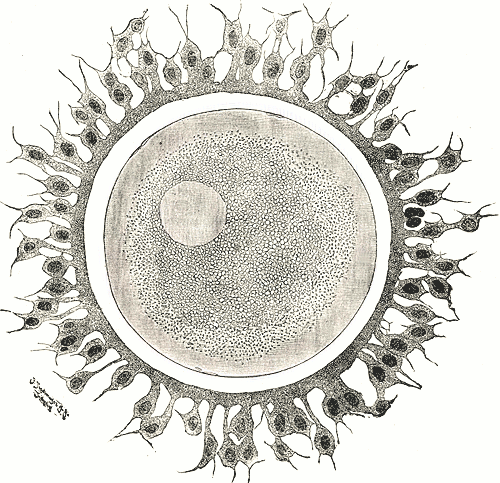|
The human reproductive system is a complex set of intertwining factors, many of which are required for sustained fertility. By interrupting even a single one of these required processes, we can find new ways to create exciting non-hormonal contraceptives for men. One process is fertilization, or the joining of human egg and sperm to create a zygote. Fertilization is a prime target for male contraception because of its place as the last step in the reproductive chain. Fertilization from Acrozome to Zona PellucidaThe process of fertilization takes place long after other steps in reproduction like spermatogenesis, sperm transport, and sperm swimming through the reproductive tract. Once the sperm have reached the egg, or oocyte, they begin the process of binding to the egg via the acrosome reaction. The acrosome, a structure at the head of sperm, contains enzymes that are required to bind and break through the coating of the egg. The acrosome reaction begins as the sperm approaches the zona pellucida (ZP). The ZP is a mixture of sugars and proteins that surround the outer membrane of an egg. When the ZP binds sperm, enzymatic interactions provide almost a “lock and key” recognition that allows the process to continue. The enzymes stored in the acrosome play a number of functions, all required to penetrate the egg. Additionally, ion channels are involved in a process called sperm hyperactivation, which is crucial to fertilization. The whipping of the tail of sperm provides a mechanical boost to the sperm, thus allowing further penetration. Once the sperm has made it’s way past the ZP, the cortical reaction occurs, where new enzymes stored in granules are expelled. These enzymes harden the ZP, making it impermeable to other sperm. At this point, the membranes of the sperm and egg are prepared to fuse. Once they do, their genetic material combines to make a mature ovum. All of these processes are tightly regulated, complicated orchestrations with multiple failure points. Some of them have been identified as possible targets for male contraception. Some targets such as TSSK6 are under investigation, and MCI is even funding work into the targets CRISP1 / 2 through Patricia Cuasnicu’s lab in Argentina. A drug that prevents fertilization has some exciting potential, as theoretically they could be used by both men and women, providing true non-hormonal equity to the contraceptive world. Additionally, it would have the benefit of a short onset time, and could be taken possibly a few hours before coitus. There’s more than one way to contracept.Reproduction is a big, complicated machine, with lots of ways to put a temporary hold on the process. Fertilization is one way that male contraceptives can be created. Targets that prevent that actual fusion of sperm and egg are being worked on right now as potential male contraceptives. There are other projects focused on preventing spermatogenesis, sperm transport, and sperm motility. Together, we’re hopeful that these scientific ventures create multiple forms of male contraception with diverse product profiles that meet the needs of more users. Nuts & Bolts: Fertilization To learn more about, please visit our series of posts about male reproduction and contraception: For additional terminology related to male contraception and the male reproductive system, please visit our glossary: For additional publications related to male contraception and the male reproductive system, please visit our publications page:
0 Comments
Your comment will be posted after it is approved.
Leave a Reply. |
Categories
All
Archives
June 2024
|
|
|
Donate to Male Contraceptive InitiativeYour generous donation makes a difference!
|
© Male Contraceptive Initiative. All rights reserved.




 RSS Feed
RSS Feed
